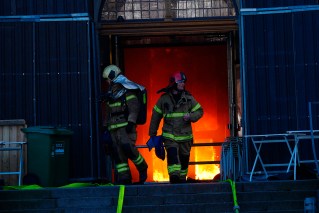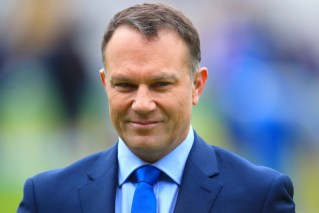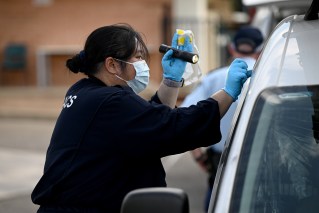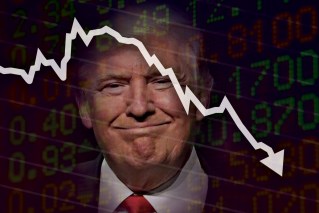The future of Australian manufacturing will be across food and drink, space and recycling industries as Prime Minister Scott Morrison outlines a $1.5 billion strategy in a key pre-budget speech.
Citing the importance of manufacturing to New South Wales’ Hunter region, north and central Queensland, Tasmania and regional Victoria – all areas hosting marginal federal seats – Mr Morrison will commit to not raising taxes and more deregulation, with the government further propping up businesses making “critical necessities” to protect against global supply chain shocks.
Mr Morrison will tell the National Press Club in Canberra on Thursday the six key manufacturing areas where the government will direct its attention.

Scott Morrison’s manufacturing plan will be shared at the Press Club. Photo: AAP
The speech brings together several of the threads the government has been laying out in recent weeks, including the so-called “gas-led recovery”, training schemes, calls for industrial relations changes, and market deregulation.
In his pre-budget address – before a financial statement he called “one of the most important, if not the most important, since the Second World War” – the PM will commit Australia to a 10-year plan to bolster industries the government sees as most promising for the future.
The manufacturing priorities are:
- Resources technology and critical minerals processing
- Food and beverage manufacturing
- Medical products
- Clean energy and recycling
- Defence industry
- Space industry.
“The overarching objective of our modern manufacturing strategy is to build scale and capture income in high-value areas of manufacturing where Australia has either established competitive strength or emerging priorities,” he will say, according to speech previews shared to media.
“We need a deeper appreciation that advanced manufacturing is not just about what we make – it’s how we make it and how we sell our products domestically and internationally.”
A $1.3 billion ‘modern manufacturing initiative’ will invest cash in research and development facilities or helping those industries upscale.
The government will also partner with key players in the industries to plan how to boost those sectors.
“It’s all about alignment, across different levels of government, with industry and with the research and education sectors,” Mr Morrison will say.
The PM also flagged possible future changes to controversial policy areas including tax, industrial relations and regulation.

Mr Morrison sees the space industry as one of the key priorities. Photo: AAP
“You can invest all the resources you like in industry programs,” Mr Morrison’s speech says.
“But if taxes are too high, industrial relations systems are too complicated, the adoption of digital technology is patchy, energy is too expensive, approvals take too long and are too costly, the roads are clogged, employees do not have the right skills, and you are shut out of overseas markets, you are wasting your time.”
The manufacturing strategy also includes plans to secure “sovereign capability in areas of national interest” with government bolstering those industries to keep producing. Those areas are not noted.
During the pandemic, production of medical supplies, personal protective equipment and hand sanitiser were under stress as overseas supply chains experienced disruption due to border closures and quarantine.

The $1.5 billion plan sets the government’s industry priorities. Photo: AAP
A $107 million ‘supply chain resilience initiative’ is meant to encourage manufacturers in the “critical” industries to keep producing, even in times of stress.
Speaking more broadly about the budget, with predictions the deficit could hit a record $200 billion, the PM will tell those gathered “this budget will be necessarily different in scale to those we have seen for generations”.
Mr Morrison will say the federal treasury estimated another 700,000 jobs would have been lost without government measures like JobKeeper and JobSeeker, and that 760,000 jobs have already “come back” into the economy.
“Our effective unemployment rate has fallen from 14.9 per cent to 9.3 per cent. But there are further risks and challenges ahead,” he will say.
“We are not through this yet. There is still much more to be done.”
The federal budget will be handed down on Tuesday.









